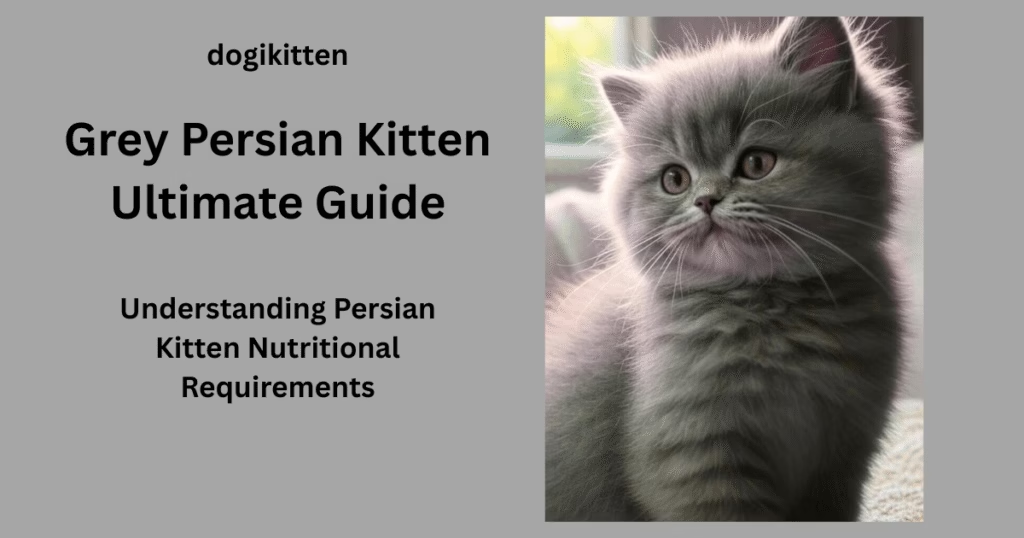
Discover the best food for grey Persian kittens with our comprehensive feeding guide. Learn about nutritional needs, top food brands, feeding schedules, and health considerations for your beautiful gray Persian kitten.
- Introduction to Grey Persian Kittens
- Understanding Persian Kitten Nutritional Requirements
- Best Food Options for Persian Kittens
- Feeding Schedule and Portions
- Special Considerations for Grey Persian Kittens
- Health Considerations and Dietary Management
- Common Feeding Problems and Solutions
- Grooming and Care for Gray Persian Kittens
- Conclusion
- Frequently Asked Questions
Introduction to Grey Persian Kittens
Grey Persian kittens, also known as Blue Persian cats, represent one of the most elegant and sought-after color variations in the Persian breed family. These magnificent felines are characterized by their luxurious long coats that range from light, dusty grey to rich slate grey tones, combined with their distinctive flat faces and large, expressive eyes. While their stunning appearance makes them popular choices for both pet owners and cat show enthusiasts, these regal creatures require specialized care from their earliest days, particularly when it comes to their dietary needs.
The grey Persian kitten’s unique physical characteristics, including their brachycephalic (flat-faced) features and long, dense coat, create specific nutritional requirements that differ from other cat breeds. Their distinctive facial structure can make eating certain foods challenging, while their luxurious coat demands specific nutrients to maintain its health and lustrous appearance. Understanding these special needs is crucial for ensuring your grey Persian kitten develops into a healthy, happy adult cat.
Understanding Persian Kitten Nutritional Requirements
Persian kittens have distinct nutritional needs that set them apart from other feline breeds. Their rapid growth phase, combined with their unique physical characteristics, demands a carefully balanced diet rich in specific nutrients.
High-Quality Protein Requirements
Persian kittens are obligate carnivores, meaning they require a diet heavily based on animal protein. During their growth period, they need up to 50% of their diet to consist of high-quality protein sources such as chicken, turkey, fish, and organ meats. This protein requirement supports muscle development, maintains their luxurious coat, and provides the essential amino acids necessary for proper growth.
Essential Fatty Acids for Coat Health
The signature long, dense coat of grey Persian kittens requires substantial amounts of omega-3 and omega-6 fatty acids. These essential fatty acids act as the foundation for maintaining coat health, reducing skin irritations, and preventing excessive shedding. A deficiency in these nutrients can result in dull, brittle fur and increased susceptibility to skin problems.
Digestive Health Considerations
Persian kittens have gradually developing digestive systems that remain immature for extended periods. This makes them particularly sensitive to dietary changes and requires foods formulated with highly digestible proteins and adapted fiber content, including prebiotics and psyllium, to support healthy intestinal flora.
Special Brachycephalic Needs
The flat-faced structure of Persian kittens creates unique feeding challenges. Their shortened jaw and distinctive head shape require specially designed kibble that is small, rectangular, and soft-textured to make picking up and chewing easier.
Best Food Options for Persian Kittens
Royal Canin Persian Kitten
Royal Canin Persian Kitten stands out as the gold standard for breed-specific nutrition. This formula is specifically designed with the unique needs of Persian kittens in mind, featuring small rectangular kibble with a soft texture that accommodates their brachycephalic jaw structure. The food contains highly digestible L.I.P. proteins (over 90% digestibility), adapted fiber content including psyllium, and prebiotics to support developing digestive systems.
The formula also includes a patented complex of antioxidants, including vitamin E, to support the kitten’s developing immune system. Additionally, it’s enriched with omega-3 and omega-6 fatty acids specifically to promote the development of that signature long, dense, silky Persian coat.
Hill’s Science Diet Kitten Food
Hill’s Science Diet offers excellent nutrition for Persian kittens with DHA from fish oil supporting healthy brain and eye development. The formula includes high-quality protein for building lean muscles and balanced minerals for strong bones and teeth. This brand provides natural, easy-to-digest ingredients that are particularly beneficial for Persian kittens’ sensitive digestive systems.
Wet Food Recommendations
Wet food is particularly beneficial for Persian kittens, especially during teething periods when they might refuse dry kibble. The high moisture content (70-85%) in wet food helps ensure proper hydration, which is crucial for Persian cats who are prone to kidney issues. Persian cats generally prefer wet food and benefit from its easier digestibility.
Combination Feeding Approach
Many veterinarians and breeders recommend a combination of high-quality wet and dry food. This approach provides the dental benefits of dry kibble while ensuring adequate hydration from wet food14. The ideal ratio often suggested is 80% wet food to 20% dry food, particularly for Persian cats with kidney sensitivities.
Feeding Schedule and Portions
Age-Specific Feeding Guidelines
Birth to 4 Weeks: Persian kittens should nurse from their mother or receive kitten milk replacer every 2-3 hours, including overnight. Never give cow’s milk, as Persian kittens lack the necessary enzymes to digest it properly.
4 to 8 Weeks: Begin introducing ultra-soft mousse or gruel made by blending kitten milk replacer with high-quality wet kitten food. Offer this mixture 4-6 times daily, allowing gradual exploration and taste development.
8 Weeks to 6 Months: Establish regular feeding schedules with 3-4 meals per day. Persian kittens should eat solid food independently and begin drinking water during this period.
6 Months and Beyond: Transition to 2 meals per day as growth rates slow and nutritional needs shift toward maintenance rather than rapid growth.
Portion Control and Monitoring
Persian kittens should gain 15-20 grams per day during their early growth period. Monitor their weight regularly and adjust portions accordingly to prevent both underfeeding and overfeeding, as Persian cats are prone to obesity due to their relatively sedentary nature.
Special Considerations for Grey Persian Kittens
Coat Color Maintenance
Grey Persian kittens require specific nutrients to maintain their distinctive coat color and texture. The grey coloration, officially recognized as “blue” in cat fancy terms, can range from light dusty grey to deep slate grey. Proper nutrition with adequate omega fatty acids helps maintain color vibrancy and coat density.
Temperature Sensitivity
Persian cats, including grey varieties, are sensitive to extreme temperatures due to their thick coats and brachycephalic features. During hot weather (above 25°C), it becomes particularly important to focus on wet diets and ensure adequate hydration. Indoor living is generally recommended to prevent overheating and protect their luxurious coats.
Gradual Food Transitions
Persian kittens are notorious for having sensitive stomachs and experiencing digestive upset when their diet is changed abruptly. Any food transitions should be done gradually over 7-10 days, slowly mixing increasing amounts of new food with decreasing amounts of the old food.
Health Considerations and Dietary Management
Polycystic Kidney Disease (PKD) Prevention
Persian cats have a higher incidence of polycystic kidney disease than other breeds, affecting approximately 40% of Persians. While this condition cannot be prevented through diet alone, maintaining proper hydration through wet food consumption can help support kidney health.
Respiratory Health Support
Due to their brachycephalic nature, Persian kittens are prone to respiratory issues. Maintaining proper body weight through appropriate nutrition is crucial, as obesity can exacerbate breathing difficulties. Foods with optimal protein content and controlled calories help maintain healthy weight.
Digestive Health Management
Persian kittens often experience digestive sensitivities and may require prescription diets if they develop food allergies or intolerances. Signs of digestive issues include changes in eating habits, irregular bowel movements, or stomach upset.
Common Feeding Problems and Solutions
Feeding Difficulties Due to Facial Structure
Persian kittens may struggle with certain kibble shapes and sizes due to their flat faces. Solutions include:
- Choosing specially designed Persian kitten kibble with appropriate size and texture
- Softening dry food with warm water or kitten milk replacer
- Transitioning to wet food during teething periods
Picky Eating Behaviors
Persian cats are known for their discriminating palates and may refuse certain foods. To address this:
- Offer variety in flavors and textures
- Maintain consistent feeding schedules
- Avoid giving in to demands for human food, which can create nutritional imbalances
Hairball Management
The long coat of Persian kittens increases their risk of hairball formation. Dietary management includes:
- Foods formulated specifically for long-haired breeds
- Adequate fiber content to support hair passage
- Regular grooming to reduce ingested hair
Grooming and Care for Gray Persian Kittens
Daily Grooming Requirements
Gray Persian kittens require daily grooming starting from an early age to prevent matting and maintain coat health. Use a wide metal comb rather than plastic combs, which can create static electricity. Pay special attention to areas prone to matting, including behind the ears, around the legs, and under the armpits.
Bathing Schedule
Unlike many cat breeds, Persian kittens benefit from regular baths every 2-6 weeks. This helps remove excess oils from their skin and keeps their grey coat looking pristine. Use gentle cat-specific shampoos and ensure thorough rinsing to prevent residue buildup.
Eye and Facial Care
Persian kittens require special attention to their facial area due to their flat features. Clean around their eyes daily to prevent tear staining and bacterial buildup. Their prominent eyes make them susceptible to various eye conditions, so regular monitoring is essential.
Conclusion
Caring for a grey Persian kitten requires understanding their unique nutritional needs and providing appropriate food choices that support their growth, health, and distinctive coat characteristics. The best food for Persian kittens combines high-quality protein, essential fatty acids, and easily digestible ingredients in a format that accommodates their brachycephalic features.
Royal Canin Persian Kitten emerges as the top choice for breed-specific nutrition, though Hill’s Science Diet and other high-quality kitten foods can also provide excellent nutrition when combined with wet food options. The key to successful feeding lies in establishing proper schedules, monitoring growth and health, and being attentive to the special needs that make grey Persian kittens such unique and beautiful companions.
Remember that every grey Persian kitten is an individual, and working closely with your veterinarian to develop an appropriate feeding plan will help ensure your kitten grows into a healthy, happy adult cat. With proper nutrition, regular grooming, and attentive care, your gray Persian kitten will develop into the magnificent, regal companion that makes this breed so beloved worldwide.
Frequently Asked Questions
Q: What is the best food brand for grey Persian kittens?
A: Royal Canin Persian Kitten is widely considered the best choice due to its breed-specific formulation with appropriate kibble size, digestive support, and coat-enhancing nutrients. Hill’s Science Diet Kitten is also an excellent alternative.
Q: Should I feed my gray Persian kitten wet or dry food?
A: A combination of both is ideal, with emphasis on wet food (approximately 80%) to ensure proper hydration. Wet food is particularly important during teething periods and for Persian cats prone to kidney issues.
Q: How often should I feed my grey Persian kitten?
A: Feeding frequency depends on age: 4-6 times daily for kittens 4-8 weeks old, 3-4 times daily for kittens 8 weeks to 6 months, and 2 times daily for kittens over 6 months.
Q: Are there any foods I should avoid giving my gray Persian kitten?
A: Avoid dairy products (Persian cats are lactose intolerant), raw fish and meat, onions, garlic, chocolate, and caffeine-containing products. These can cause digestive upset or be toxic to your kitten.
Q: Why does my Persian kitten have trouble eating dry kibble?
A: Persian kittens’ flat faces and shortened jaws make it difficult to pick up and chew regular-sized kibble. Choose specially designed Persian kitten kibble or soften dry food with water.
Q: How can I prevent my grey Persian kitten from becoming overweight?
A: Monitor portion sizes carefully, maintain regular feeding schedules, encourage gentle play activity, and avoid overfeeding. Persian cats are prone to obesity due to their calm nature.
Q: When should I transition my Persian kitten to adult food?
A: Gradually transition to adult food around 12 months of age, as this is when Persian kittens typically reach maturity. The transition should be done slowly over 7-10 days to prevent digestive upset.
Q: Do gray Persian kittens need special supplements for their coat color?
A: A high-quality kitten food with appropriate omega fatty acids should provide adequate nutrition for coat health. Additional supplements are typically unnecessary and should only be given under veterinary guidance.
Q: How much water should my grey Persian kitten drink daily?
A: Persian kittens should have constant access to fresh water. If they’re eating primarily wet food, their additional water needs will be lower, but fresh water should always be available.
Q: What signs indicate my Persian kitten has digestive issues?
A: Watch for changes in eating habits, irregular bowel movements, vomiting, diarrhea, or lethargy. Persian kittens have sensitive digestive systems and may require dietary adjustments.
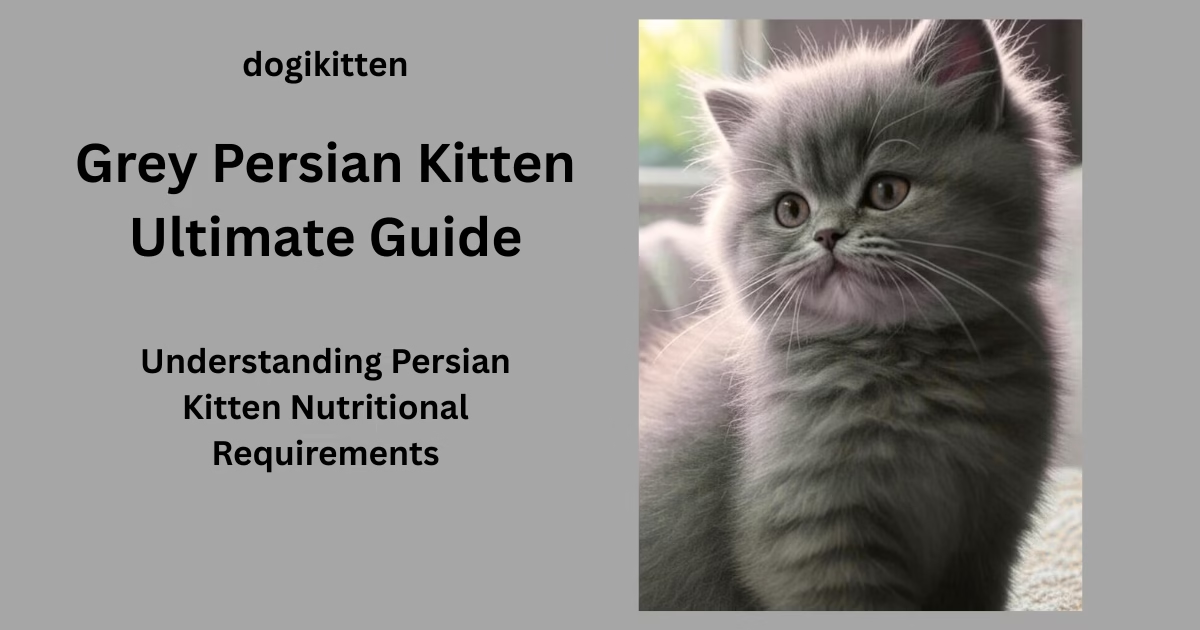
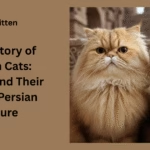




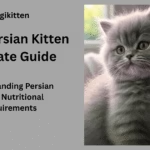
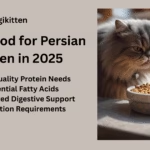
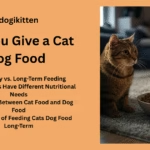

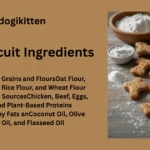
2 thoughts on “Grey Persian Kitten Ultimate Guide”